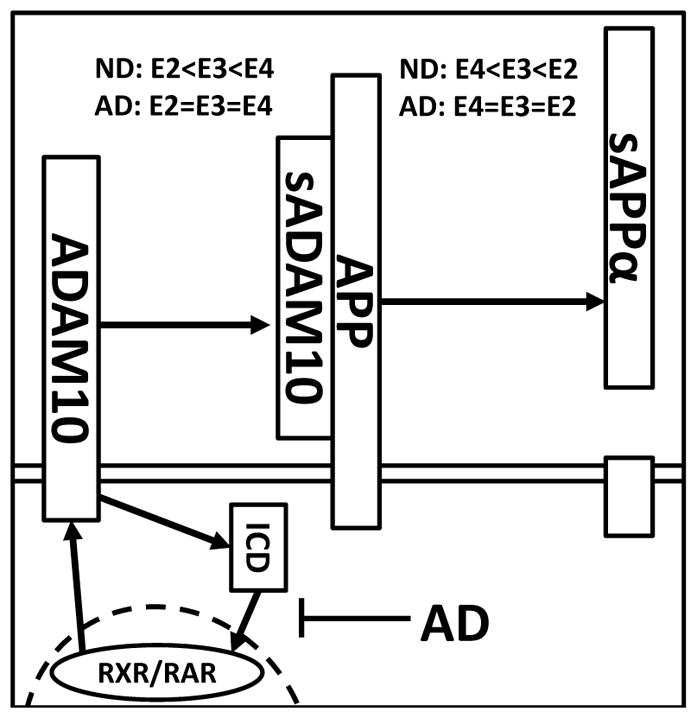Fig. 5.

Proposed schematic of one potential mechanism for sADAM10 regulation in AD and the role of apoE genotype. ADAM10 expression is driven by RAR/RXR transcription. At the cell surface, full-length ADAM10 undergoes proteolysis in an apoE genotype dependent manner (apoE2<apoE3<apoE4) resulting in soluble extracellular fragment (sADAM10) and an intracellular domain fragment (ICD). sADAM10 metabolizes full length AβPP to produce sAβPPα, a process that is apoE dependent (apoE2>apoe3>apoE4). Under normal conditions, the ICD fragment of ADAM10 transitions to the nucleus where it induces ADAM10 expression. In APOE4 carriers, sADAM10 activity is less efficient than in other APOE genotypes and, in response, the ADAM10 protein population is increased to compensate for the lack of ADAM10 efficiency. However, in AD individuals the RAR/RXR machinery is defective and, as a result, ADAM10 levels cannot be sufficiently upregulated to overcome the diminished efficiency of ADAM10 in APOE4 carriers. Consequently, there is less processing of AβPP by sADAM10, which can lead to increased Aβ synthesis and the accumulation of Aβ peptides in the brains of AD subjects with an APOE4 genotype.
